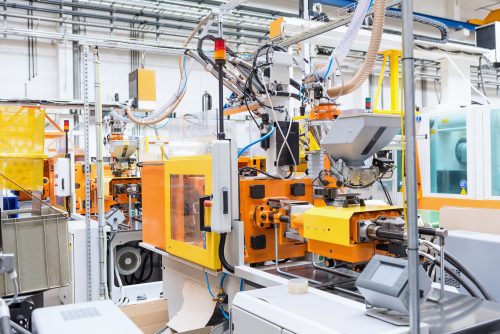FIVE STEPS TO LOW VOLUME BUILD NIRVANA
Previously I talked about the importance of low volume manufacturing as a key bridge between design and volume production. It may seem obvious, but few manufacturers have been able to successfully master the manufacturing trifecta of prototype, low volume build, and global mass production!
I talked about why low volume build is so important in my last blog, but for those that didn’t read it (shame on you), this is why I think it is an essential link from research to realization.
Getting from design to prototype is one thing, but getting that prototype into ‘manufacturing’ is quite another. Phase one of this is low volume manufacturing, what I referred to as the missing link. It is production, but it isn’t mass production. It’s certainly not prototyping because it is carried out with the same rigorous processes that will flow into mass production when the product is launched. To be clear this is quite different to NPI, or New Product Introduction, where a product is walked through the processes that will eventually mass produce it. Low volume build and manufacturing could be a pilot build prior to volume, a targeted custom build for a specific market, or simply a product that isn’t destined for high volume, like professional audio equipment or retail fixtures.
Having established its importance, what are the key steps to success in low volume build? Here are my top five:
1.) Connecting the Digital Thread
Getting each and every stage of the research to realization process right is essential and for that to happen data has to flow seamlessly through every process. The digital thread does just that, connecting design data to manufacturing data and to the supply chain. Jabil has more than half a century of expertise in supply chain and manufacturing, so connecting that experience and the global footprint and the more than 100,000 employees needs a robust digital thread and the commitment of every part of the business to a full digital transformation. Data enables agility, and manufacturing agility is one of the key elements that enable brands to create life-changing products.
2.) Concurrent Design
It’s easy to see the whole process of bringing a product to market as consecutive steps from idea to the final delivery of the product to the user, but a serial approach can slow things down. Speed has never been more important to the innovation process. Thinking ahead is essential to deliver ideas quickly to demanding and impatient consumers, and before the competition. The process should be seen as parallel or concurrent disciplines that impact upon each other. For example, the design needs to interact with the supply chain to ensure that the parts specified can be obtained reliably and at the right price.
3.) Connecting Diverse Teams with Domain Expertise
Much as connecting the processes and data is important, what really sparks magic is connecting people. At every stage, we like to bring diverse teams together that can all bring something special to the party. For many of the designers at Radius, this is particularly exciting when we need domain expertise, like optics, RF engineering or additive manufacturing. The hundreds of engineers in the Jabil team with deep domain knowledge and experience allow Radius design engineers to utilize the very latest techniques and technologies. Some have likened it to being a kid in a candy store! What is clear is that it offers Radius designers a unique insight into technology and manufacturability.
4.) Using Leading Edge Technology
With the digital revolution comes all kinds of enabling technologies. We call these digital building blocks, and we use them throughout our design process and throughout the entire product lifecycle. This is another area where we’re lucky enough to leverage the broader Jabil family. It isn’t enough to understand and use techniques like 3D Printing, we need to know their limitations, where they can be applied robustly, and where they are economically appropriate. Real engineering rigor is needed to ensure new technologies work at the design, prototype, NPI, low volume build, and mass production phases. Another area where five decades of applying and introducing new technologies to manufacturing is valuable.
As well as delivering many prototype iterations quickly and accelerating the design process, Additive Manufacturing (AM), or 3D Printing, is finding its way into high volume manufacturing, particularly when an element of mass customization is part of the value proposition.
Then, on March 29th, Bobby Garfield, Senior Human Factors Specialist, and Alex Dupont, User Experience Designer, will lead a technical demonstration at the fourth annual IDSA Medical Design Conference. Bobby and Alex will show how today’s medical device development teams can purposefully select and combine elements of both physical and AR-based prototyping to bring new efficiencies in design iteration, while still enabling robust user feedback. Through case studies and simulated examples, they will share insights on how AR can be integrated seamlessly with traditional design processes and prototyping tools.
AM is just one example of the many technologies used. Artificial Intelligence (AI) is finding its way into our daily life both at home and at work. This will impact upon the way we design and the way we manufacture. Augmented Reality allows us to view designs in a virtual world, right from the CAD data and across the world. We are starting to develop digital twins of products, processes and even factories that will help us simulate the user experience, volume production, and supply chain disruption. And our world is becoming augmented by machines, robots, and ever more complex automation.
5.) Supply Chain Orchestration
If the supply chain breaks down, all the good work done in design, development, and prototyping is for naught! It doesn’t matter how wonderful our idea or design is, if we can’t deliver, the product will fail. This is as true in low volume build as it is in mass production. Long lead time components, single sourced parts or supply chain risk can all damage a product’s route to the consumer, not to mention the ability for the product to make money.
Supply chain orchestration starts early and continues throughout that whole product lifecycle. It must have the flexibility and agility to mitigate risk, absorb changes in volumes, and manage rapid product introduction when that is required. Experience here is essential, as is having the right tool. Jabil created their own supply chain suite, InControl, which utilizes the digital thread to connect and manage complex supply chains.
Foundations, Building Blocks, and More
RELATED CONTENT
RELATED EXPERTISE
RELATED INSIGHTS
RELATED PROJECT WORK
RELATED CAPABILITIES
WANT TO LEARN MORE?
Start a conversation with Radius to learn how we can help you take your Healthcare project to the next level.


